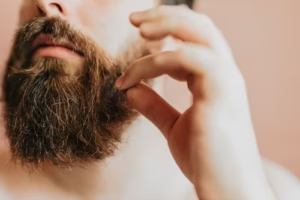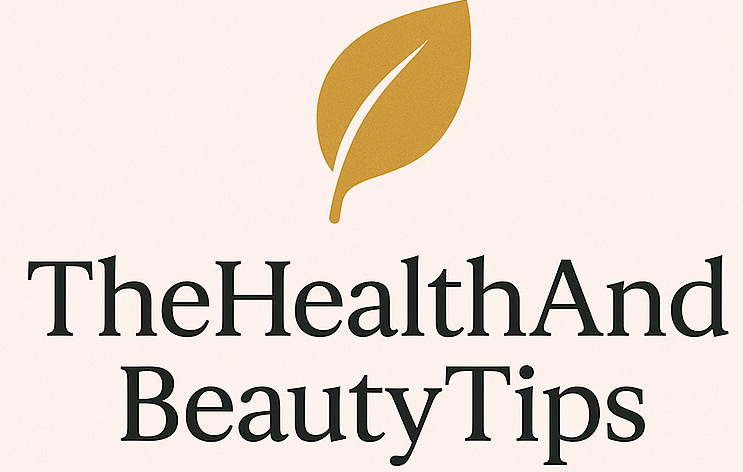Beard care tips
Having a full, thick, and well-maintained beard is a sign of rugged masculinity and, for many men, a point of pride. However, a beard requires care and attention to keep it looking its best. Whether you’re sporting a short, neatly-trimmed beard or a long, bushy mane, a consistent and proper beard care routine is essential to maintaining its health, cleanliness, and overall appearance.
we’ll cover everything you need to know about beard care—from grooming techniques to products and tools, as well as addressing common issues men face with their facial hair. With the right care, you can have a beard that complements your style and boosts your confidence.
Why is Beard Care Important?
A well-maintained beard goes beyond aesthetics—it also plays a significant role in your skin’s health. Here are a few reasons why beard care should be an integral part of your daily routine: Beard care tips
- Skin Health: Your beard can trap dirt, oil, and bacteria close to your skin, leading to breakouts and irritation. A proper care routine ensures your skin beneath the beard stays healthy.
- Beard Growth: Regular care helps nourish the hair follicles and can improve hair growth, making your beard appear thicker and fuller.
- Comfort: Without proper care, your beard can become itchy, dry, or coarse. A good beard care routine helps keep everything soft and comfortable.
- Appearance: A well-groomed beard enhances your appearance, complements your style, and can even elevate your facial features.
Essential Beard Care Tips
Let’s dive into the most important aspects of beard care that will keep your facial hair looking great and feeling fantastic.
Clean Your Beard Regularly
Just like the hair on your head, your beard needs regular cleansing to stay fresh. While washing your beard daily may be tempting, over-washing can strip your facial hair and skin of natural oils, leading to dryness and irritation.
Beard Shampoo: Use a gentle beard shampoo designed specifically for facial hair. Regular hair shampoo can be too harsh on the beard hair and skin beneath.
- How often? Wash your beard 2-3 times per week, or daily if you’re very active and sweat a lot.
- Tip: Make sure to rinse thoroughly to remove all product build-up.
Beard Conditioner: Conditioners help soften the beard and hydrate both the hair and skin underneath. Apply a small amount of beard conditioner after shampooing, and leave it on for 1-2 minutes before rinsing.
- Tip: For extra moisture, you can opt for a leave-in beard conditioner or beard balm.
Keep Your Beard Hydrated
Your beard can become dry, flaky, and unruly without proper hydration. Hydrating products help maintain softness and make it easier to groom. The skin underneath also benefits from hydration, reducing the risk of beard dandruff or itchy skin.
Beard Oil: Beard oil is a must-have for moisturizing both your beard and the skin beneath. It helps control frizz, adds shine, and prevents dryness.
- How to use it? Apply a few drops of beard oil to your fingertips, rub them together, and then massage them into your beard, focusing on the roots.
- Tip: Use a lightweight oil if you have oily skin, or choose a heavier oil for drier skin types.
Beard Balm: Beard balms often contain a mix of oils and beeswax. They offer both moisture and hold, allowing you to shape your beard while keeping it hydrated.
- Tip: Apply balm after using beard oil for extra control and moisture.
Trim Your Beard Regularly

Even if you’re growing out a long beard, regular trimming is essential to keep it looking neat and healthy. Trimming your beard helps shape it, prevents split ends, and encourages healthy growth.
Beard Scissors: Invest in a good pair of beard scissors for precision trimming, especially around your mustache or cheekbones.
- Tip: Trim your beard when it’s dry to avoid cutting too much. This way, you can see exactly how much hair you’re removing.
Beard Trimmer: For those with medium to long beards, a quality beard trimmer is a great tool to maintain an even length and shape.
- Tip: Use a guard to ensure an even trim.
Shaping: Shape the neckline and cheeklines of your beard to match the natural contour of your face. Avoid going too high on the cheeks or too low on the neck—this can lead to an unnatural look.
- Tip: Use a razor or a trimmer without a guard to define these areas.
Brush or Comb Your Beard Daily
Brushing or combing your beard daily is essential to maintain its health, appearance, and overall shape. It helps distribute natural oils, removes tangles, and promotes even growth.
Beard Comb: Use a wide-tooth comb for longer beards and a fine-tooth comb for shorter beards. A comb helps prevent breakage and stimulates blood flow to the hair follicles, promoting growth.
- Tip: Start from the bottom of your beard and work your way up to detangle knots and evenly distribute oils.
Beard Brush: A boar bristle brush is a great option for stimulating natural oils, adding shine, and softening your beard. It also helps train your beard hair to grow in the desired direction.
- Tip: Brush your beard after applying beard oil to ensure even distribution.
Eat a Healthy Diet for Beard Growth
Beard growth can be influenced by your overall health. Eating a balanced diet with the right vitamins and nutrients is essential for encouraging thicker, stronger beard hair.
Vitamins and Minerals: Ensure you’re getting enough vitamins A, C, D, E, and biotin, as well as minerals like zinc and iron, all of which are important for healthy hair growth.
- Tip:Incorporate foods like eggs, nuts, leafy greens, and fish into your diet for optimal beard growth.
Protein: Hair is made of protein, so ensure you’re getting adequate amounts in your diet through lean meats, beans, and legumes.
Be Mindful of Skin Care Under Your Beard
The skin under your beard is just as important as the hair itself. Neglecting it can lead to irritation, acne, or ingrown hairs. To maintain healthy skin, follow these steps:
- Exfoliate: Use a gentle scrub or exfoliator on your face and neck once a week to remove dead skin cells, preventing clogged pores and ingrown hairs.
- Moisturize: Apply a lightweight, non-comedogenic moisturizer to the skin under your beard to prevent dryness and flakiness.
- Shave Carefully: If you’re shaving your neckline, be cautious. Use a sharp razor, and consider shaving after your shower when your skin is soft and hydrated.
Advanced Beard Care Tips
If you’re already practicing the basics of beard care, here are a few advanced tips to take your beard game to the next level.
Use Beard Growth Supplements
If you’re struggling with patchy or slow beard growth, beard growth supplements can help. These supplements often contain biotin, vitamins, and minerals designed to support healthy hair growth.
- Tip: Always consult with a doctor before adding any supplements to your routine to ensure they’re suitable for your health.
Be Patient
Growing a great beard takes time. Even with the best care, it can take several months for your beard to fully develop. Stay patient, and resist the urge to trim too much as your beard grows.
Invest in Quality Tools
When it comes to grooming, having the right tools can make all the difference. High-quality trimmers, combs, and brushes can make your beard care routine more effective and efficient. Consider investing in professional-grade grooming tools that suit your needs.
Beard care is more than just about looks; it’s about feeling confident in the appearance of your facial hair and ensuring the health of your skin underneath. By following these essential tips and developing a personalized beard care routine, you’ll be able to maintain a soft, thick, and well-groomed beard that enhances your overall style.
Whether you’re just starting to grow your beard or are looking to refine your existing care routine, consistency is key. With the right approach, your beard can become one of your best assets.
Can I use hair products on my beard?
While it might seem convenient to use regular hair products on your beard, it’s not always the best option. Your beard and the skin underneath it are different from the hair on your scalp, so using products not specifically designed for facial hair can lead to irritation, dryness, or even breakouts. Here’s why:
Why Hair Products Aren’t Ideal for Your Beard:

The difference in Skin and Hair Texture:
- The skin on your face is more sensitive than the scalp. Hair products, like shampoos and conditioners designed for scalp hair, are often too harsh for facial skin and can strip the natural oils that keep your beard and skin hydrated.
- Facial hair is often coarser than scalp hair, so products that are formulated for head hair may not provide the moisture or nourishment your beard needs.
Potential for Irritation:
- Regular hair products often contain ingredients (like sulfates, alcohol, and artificial fragrances) that can irritate the skin beneath your beard, leading to redness, itching, or even acne.
- Some hair products may also be comedogenic (pore-clogging), which can result in breakouts, especially around your beard area.
Scalp Products Can Leave Build-Up:
- Scalp shampoos often have a stronger cleaning power to remove dirt, oil, and product buildup from your scalp. However, this can leave your beard feeling dry and brittle, especially if the product strips your facial hair of essential oils.
What You Should Use Instead:
To keep your beard healthy and looking its best, use products formulated specifically for facial hair:
Beard Shampoo:
- These are gentler cleansers designed to cleanse the beard without stripping it of its natural oils. They are often free of harsh chemicals like sulfates and are designed to hydrate both the hair and skin underneath.
Beard Conditioner:
- A beard conditioner helps to soften the facial hair and maintain hydration. It also ensures that your beard remains manageable and smooth, reducing frizz and breakage.
Beard Oil:
- Beard oil provides essential moisture to both your beard and the skin beneath. It helps combat dryness, flakiness, and itching while promoting healthy beard growth. You can also choose a beard oil with a scent that suits your preferences. Beard care tips
Beard Balm:
- Beard balms are thicker than oils and offer added hold, making them perfect for shaping and styling your beard while providing moisture.
Beard Brush or Comb:
- These tools are specifically designed for beard grooming. They help untangle your facial hair, distribute oils, and train the beard to grow in the desired direction without causing damage.
Summary:
While you can technically use regular hair products on your beard, it’s not recommended. Opt for products that are specially formulated for facial hair to keep your beard soft, hydrated, and healthy. Beard-specific products will provide the right care for your facial hair and skin, ensuring that both look and feel their best!
Common Beard Care Questions (FAQs)
How often should I wash my beard?
It’s best to wash your beard 2-3 times per week with a gentle beard shampoo. Washing it too often can strip it of natural oils, making it dry and coarse.
How can I stop my beard from itching?
Beard itching is often caused by dryness or irritation. To stop it, use a hydrating beard oil or balm, and make sure to exfoliate the skin under your beard regularly. Avoid scratching, as this can cause further irritation.
Does trimming my beard help it grow faster?
While trimming doesn’t directly make your beard grow faster, it helps remove split ends, which can lead to healthier, thicker growth. Regular trims also encourage even growth, making your beard look fuller.
How can I make my beard grow thicker?
Thicker beard growth is largely determined by genetics, but a balanced diet, regular care, and adequate hydration can improve the overall appearance and fullness of your beard.
Can I use hair products on my beard?
Hair products such as regular shampoos and conditioners may be too harsh for your beard. Instead, use products specifically designed for facial hair to ensure proper care without causing dryness or irritation.

